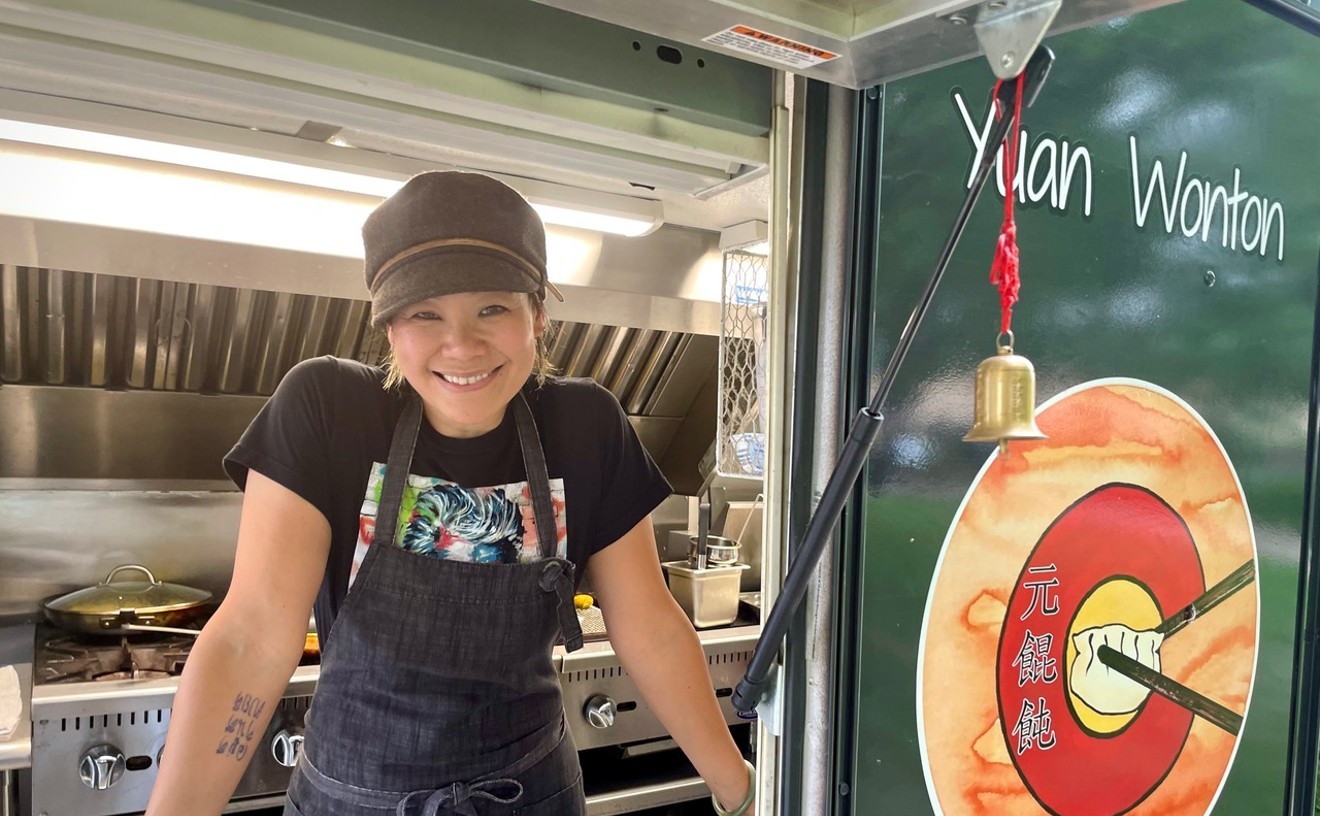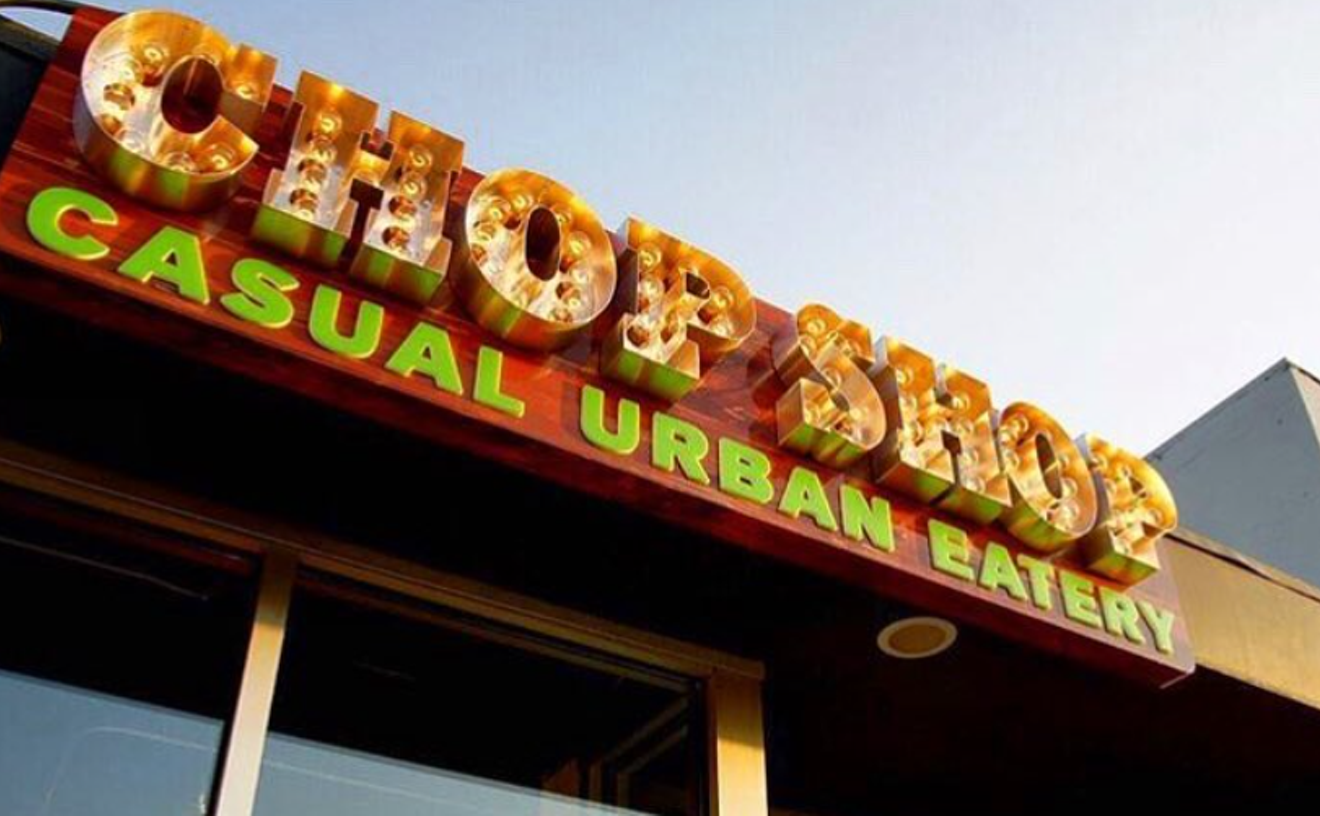Welcome to Round the Corner.
Two decades ago, imminent extinction seemed impossible for the mighty four-state chain that had started in Boulder in 1968 and grown to thirty stores at its height. Good, inexpensive food and a fun, lively diner atmosphere -- with phones at every booth so that customers could call their orders in to the kitchen -- made Round the Corner a regular stop for two generations' worth of Coloradans eager to chow down on fancy-schmancy burgers with funky toppings.
But the Round the Corner restaurants began to fade in popularity as concept eateries moved into the newer malls. Although by and large the Round the Corners were located in lower-traffic suburban shopping centers rather than high-end malls, their rents were still going up, and as a result, they faced the prospect of raising their prices or closing their doors. The parent company was focusing most of its efforts on a second venture, Good Times, a chain of drive-up burger joints that had eclipsed Round the Corner's early success. After a last-ditch effort by a stalwart group of Round the Corner managers failed to save the chain, they filed for Chapter 11 bankruptcy protection, and one by one, the stores gave up. By last year, only a solitary Round the Corner remained.
Situated to the side of Buckingham Square in Aurora, this last gasp of an eatery still brings in folks who couldn't care less about nearby shopping possibilities and instead are looking to browse through the culinary past. "I'd say anyone from about 30 to 65 who's lived in this region for any length of time recognizes the name," says Rod Brubacher, a former executive with the Round the Corner parent company who bought this final outpost in February 1999. "I've thought about changing the name, but we get so many calls all the time from people wondering if Round the Corner is still around. So I hate to give up on that."
Still, being the sole surviving Round the Corner is no guarantee of an overflowing cash register. Not only does Brubacher have to deal with the labor shortage that every metro restaurateur wrestles with these days, but he lost an obvious customer base when Lowry Air Force Base closed several years ago. "I'd say this spot had a dramatic decrease in business almost as soon as Lowry was gone," Brubacher says. "It sucked 30,000 people out of this area, and we've really never recovered."
To keep the name out there and drum up new customers, Brubacher has tried several promotions, but business remains sporadic. "New malls are going in around here, and I keep thinking maybe we should move," he says. "But I don't want to run the risk of doing what the other stores did by taking on a rent we can't handle, so I'm not sure what to do."
Well, to begin with, he could start turning out a decent meal. I'd have called the kitchen to complain about the lousy food coming out of it, but Round the Corner got rid of the tableside phones a few years ago because they made the kitchen chaotic, according to Brubacher. This was about the same time the kitchen was installing its new, wood-fired pizza oven: Although the sign outside proclaims "Gourmet Pizza, Our Newest Success," the pies were actually added in 1993. "Fooled ya!" Brubacher says gleefully.
Hardly. Beneath the char on several burned dishes (the kitchen apparently hasn't gotten the hang of that pizza oven yet), there was no mistaking the fact that Round the Corner uses cheap ingredients -- and sometimes spoiled cheap ingredients, at that. And while the service staff occasionally attempts to overcome its teenage angst, most of the time the servers shuffle around like they're in a daze, leaving dirty dishes piled all over the table.
Those dirty dishes, of course, simply remind you of all the bad food that arrived on them. For example, there was the sickeningly sweet, jellylike dipping sauce -- or was it pie filling? -- that came with the jalapeño screamers ($4.25), a dozen tiny peppers stuffed with a pasteurized, processed cheese substance that had semi-melted into something resembling partially dried glue (the screamers obviously hadn't been cooked long enough). We'd paired the alleged poppers with cheese sticks ($4.95), another previously frozen product that, like the peppers, was billed on the table tents as coming from Brew City, a respectable purveyor. But then, the photos of the cheese sticks made it look as though actual cheese would spill out of the sticks in a molten string -- and since this starter hadn't been cooked long enough, either, it was more like string cheese wrapped in wet cardboard.
And those appetizers were the high point of three Round the Corner meals.
Both the house ($3.85) and Caesar ($2.50) salads sported brown lettuce and mayonnaisey dressing. And then came the restaurant's signature item, its burger. No matter how I ordered it, the burger featured a patty that had the consistency of a hockey puck. The buns holding those pucks were stale to the point of falling apart, and the fries on the side were so overcooked they resembled Popsicle sticks. The basic burgers came with pathetic toppings -- crunchy, green tomato slices and lettuce and pickles so limp it seemed as if someone had used them to wipe the counters -- but the "gourmet" versions were no improvement. The guacamole bacon cheeseburger ($5.99) was topped with guac indistinguishable from the mayo except for its sickly green coloration, and the mushroom burger ($5.29) featured a mushroom sauce that tasted like dirt.
"What we did for the burger, we've done for the pizza," boasts the menu, and truer words were never written. On one occasion, the kids' version ($3.25) arrived badly burned; our server took it back to the kitchen and exchanged it for a less toasted, but no more tasty, pie. On a return visit, our server didn't seem to notice that she'd just plunked down an adult-sized, traditional cheese pizza ($5.50) that had been untraditionally blackened; "Ooh, they did burn that one, didn't they?" she muttered when she later removed the pie, which was missing a single slice. But even the pizzas that weren't burned had overdone crusts that gave our canine teeth a workout, and the toppings on these pies were as lame as the toppings on the burgers.
Round the Corner doesn't do any better by chicken, which is offered in a variety of overdone ways. The rubbery chicken cheesiano ($7.25), for example, had less than a dozen shreds of cheese (since they hadn't melted, you could count them) sprinkled on top of onions that had been grilled so briefly our eyes watered as we cut into them, and a tomato sauce that still had the tinny taste of the can. Beneath all of this mess, the chicken was burned.
If dinosaurs had had to eat stuff this bad, they would have prayed for extinction.
Had Round the Corner taken a cue from another popular burger chain, it might not have gone around the bend. Mike Snyder prevented Red Robin from becoming a pterodactyl when he convinced the company's Japanese ownership that he should be made CEO back in 1996. After that, he slowly and systematically replaced archaic menu items, spruced up the restaurants' appearance and revamped corporate management. Today Red Robin has a dozen outlets in Colorado, as well as 132 more across the country and in Canada, with plans to open still more.
It helps that Red Robin serves alcohol -- Round the Corner doesn't -- because that's a moneymaker that allows a restaurant to offer higher-quality food ingredients without charging more for the dishes that result. Alcohol also makes for bigger tips, which means the servers have incentive to work it harder -- and at Red Robin, they do. But more important, Snyder stayed focused on what first attracted people to Red Robin: burgers and fries.
The burgers are huge, and hugely good: fat, medium-greasy half-pounders that arrive on thick, fresh rolls with puffy steak fries on the side. The basic cheeseburger ($6.95) offered six cheese choices and was topped with lettuce and tomato slices so fresh you could eat them plain. For the Banzai burger ($6.95), the meat had been marinated in a sweet teriyaki sauce, then grilled and topped with a thick slice of cheddar and shredded pineapple; the result was almost too thick for an average-sized mouth. The peppercorn burger ($7.45) layered a big burger, peppered bacon, a peppercorn-speckled spread, pepper Jack cheese and peppery onion straws on an onion bun. Although the folks around me at the movie theater later that evening suffered, I didn't regret one bite of the fiery-flavored meal.
Finding so much flavor at Red Robin was a real surprise, since chains are rarely known for pushing tastebud buttons. Here the marinara sauce that accompanied the battered mozzarella cheese sticks ($6.45) might have come from a can, but at least the kitchen had added herbs that packed some punch. The buzzard wings ($7.45) boasted fatty skin, a cayenne-fired sauce and a side of good blue-cheese dipping goo. And while the spinach dip ($7.45) had an unwieldy texture -- the red onions were chopped too large -- it was packed with artichokes and the heat of assorted spices. The sweet-and-sour teriyaki chicken burger ($7.95) featured a tender, well-grilled breast and a real tang; the ingenious California club wrap ($7.45) took traditional (and top-quality) club ingredients, moistened them with Caesar dressing and tucked everything neatly into a tortilla.
Not everything at Red Robin flies, however. The Que Pasta ($9.45), a newer menu item, was a weird mix of penne and grilled chicken in an incongruous salsa-Alfredo sauce. Topped with fresh tomatoes, red bell peppers, black olives and sour cream, this was too much con-fusion. And the batter on the Arctic cod fish-and-chips ($8.45) was way too greasy.
The Red Robin where I ate my review meals is one of the newer stores, a super-snazzy version located at Park Meadows. But I've also been to the Arapahoe Road store, one of the oldest in the Denver area, and while the decor there isn't as chic, the food and service are just as good. Snyder is known for offering special incentives and a lot of back-patting to keep good employees happy, and this ploy works so well that those employees keep customers happy, too. The smallest customers benefit the most, since Red Robin has a superior kids' menu -- complete with games and crayon-oriented activities -- as well as plenty of unusual knickknacks (airplanes, horses, cars) hanging from every available space. And there's a slew of video games boasting large-breasted vixens to keep adolescents interested.
In this extremely competitive climate, restaurants must adapt or die. Red Robin looks like a survivor.










